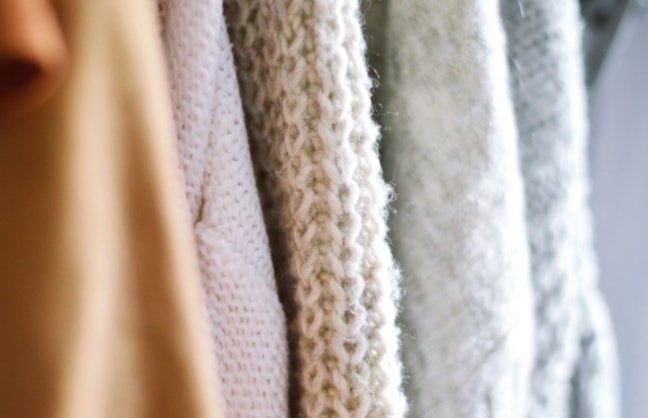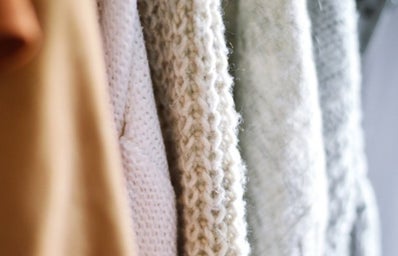Have you ever bought a crocheted top from a store that was both cute and affordable? I hate to break it to you, but that crocheted top was most likely a product of fast fashion and sweatshop labor.
If you don’t know what fast fashion is, let’s talk about it. “Fast fashion” has been a buzz phrase for the past couple of years. One article defines it as “the rapid production of clothing, generally in a way that sacrifices quality for quantity.” While buying cute clothes for an affordable price sounds appealing, it is too good to be true. One of the most significant issues facing the fast fashion industry is its use of slave labor and its contribution to the world’s mass consumption problem.
Unfortunately, fast fashion is turning into a new normal.
You might be wondering: how does crochet play into fast fashion? Because of social media, crocheting and knitting have seen a significant resurgence recently. For many, crochet fashion is super trendy. However, with the popularity of this art form, the demand for crochet clothing is also rising. As a result, fast fashion companies like Zara, Shein, and H&M have made crochet clothes popular, affordable, and one of the worst things you can buy. Here are a few reasons why.
CROCHET PRODUCTS CAN’T BE MASS PRODUCED
It is widely assumed that crochet projects can be mass-produced, but this is not true. Crochet machines do not exist! Unlike knitting, crochet products are far too complicated for machines to replicate the unique chains. On the other hand, there are knitting machines that can create a sort of faux crochet look to their garments. As a long-time crocheter, I sometimes find it challenging to determine if it is faux crochet or knitted. The message here is, buyer beware. Remember, when shopping at retailers like Forever 21, H&M, and, sadly, Target, know that you are perhaps being misled into purchasing something that is not truly what it says it is.
UNDERPAID LABOR
Perhaps you don’t care if it is what it says it is; maybe you just want “the look.” In that case, you should understand the conditions in which crochet garments are produced. If your latest fashion find was not created by a machine claiming to be “crocheted,” then it was, in fact, handmade by an underpaid worker in another part of the world, working about 16 hours a day, seven days a week, in deplorable conditions. Often, many of these workers are children. According to one article, the fast fashion industry hires about 75 million employees. Less than 2% of workers make a living wage, and many Chinese sweatshop factories only pay 49 cents an hour. There is also no protection for these workers against their abusive employers.
Another thing you should consider is that handmade crochet products are expensive because of the time it takes to make each product. A popular crafting blog called lovecrafts.com has a page that estimates how long it would take for certain products. For a “crochet whizz,” the website predicts it would take 18 hours to finish an adult sweater. This is equivalent to a full-time job. The minimum wage in Arizona in 2023 is $13.85 an hour. This means with the cost of labor and materials, a crochet sweater can easily cost between $250-$300. The fact that fast fashion brands can get away with selling a crochet cardigan for $20 is very unsettling.
dEVASTATING ENVIRONMENTAL IMPACT
One of the biggest problems with the fast fashion industry is its negative environmental impact. The average TikTok trend cycle only lasts an average of six months. Worldwide, 80 billion pieces of clothing are consumed every year. This means that landfills are full of discarded textiles. In fact, according to Princeton, “57% of all discarded clothing ends up in landfills.” In addition to the world’s overconsumption problem, the production of fast fashion clothing also releases many chemicals into the air. Fast fashion production employs 8,000 synthetic chemicals inside their sweatshops. Many of these chemicals are shown to cause cancer, and factory workers are regularly exposed to and breathing in these chemicals.
So, now you know everything about the dark side of the fast fashion industry. As a consumer, what can you do about this problem? First, and most importantly, educate yourself and others on the issue. The only way for there to be a change is to learn about the problem.
Secondly, support local, independent crocheters! You can support crocheters in many ways, such as buying their products on Etsy or social media. Unfortunately, this can be expensive. I realize not everybody can afford high-quality crochet clothes. However, it is worth the investment. If you’re looking for an alternative, try thrifting! You can find some great second-hand crochet clothes for a fraction of the cost.
Finally, learn how to crochet or knit for yourself! Not only will you save yourself money, but you can personalize your clothes however you want. Also, you can earn a lot of bragging rights by telling and showing others what you made. I love saying, “I made that,” because it is the best feeling ever.
Let’s start a new trend of supporting slow fashion instead!
For further research, please consider reading these articles:
How Shein got away with daylight robbery in 2021


